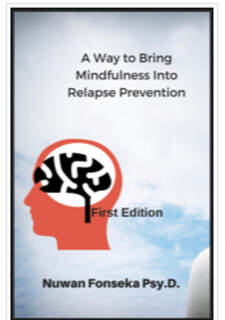
Mindfulness-integrated Relapse Prevention Technique (MiRPT)
by Nuwan Fonseka
The neuroscience research of mindfulness meditation is one of the major research fields in psychology and neurobiology. Its goal is to better understand the neural systems that are utilized in order to achieve meditative states and also to determine the effects that regular practices of mindfulness have on brain function and structure (Treadway and Lazar, 2009).
The first is state effects. State effects are recognized by the meditator who has been using meditation alongside relative meditative practices such as appropriate foods, sitting positions (asana), and emotional practices. Being aware of the subtlety of state effects can be beneficial for clinicians in helping to determine how mindfulness can be best utilized to help patients suffering from chronic stress, trauma, complicated grief, painful memories, and bursts of emotions.
online book store- https://www.amazon.ca/s/ref=d p_byline_sr_book_1?ie=UTF8&fieldauthor=Nuwan+Fonseka&searchalias=books-ca
by Nuwan Fonseka
The neuroscience research of mindfulness meditation is one of the major research fields in psychology and neurobiology. Its goal is to better understand the neural systems that are utilized in order to achieve meditative states and also to determine the effects that regular practices of mindfulness have on brain function and structure (Treadway and Lazar, 2009).
The first is state effects. State effects are recognized by the meditator who has been using meditation alongside relative meditative practices such as appropriate foods, sitting positions (asana), and emotional practices. Being aware of the subtlety of state effects can be beneficial for clinicians in helping to determine how mindfulness can be best utilized to help patients suffering from chronic stress, trauma, complicated grief, painful memories, and bursts of emotions.
online book store- https://www.amazon.ca/s/ref=d p_byline_sr_book_1?ie=UTF8&fieldauthor=Nuwan+Fonseka&searchalias=books-ca

